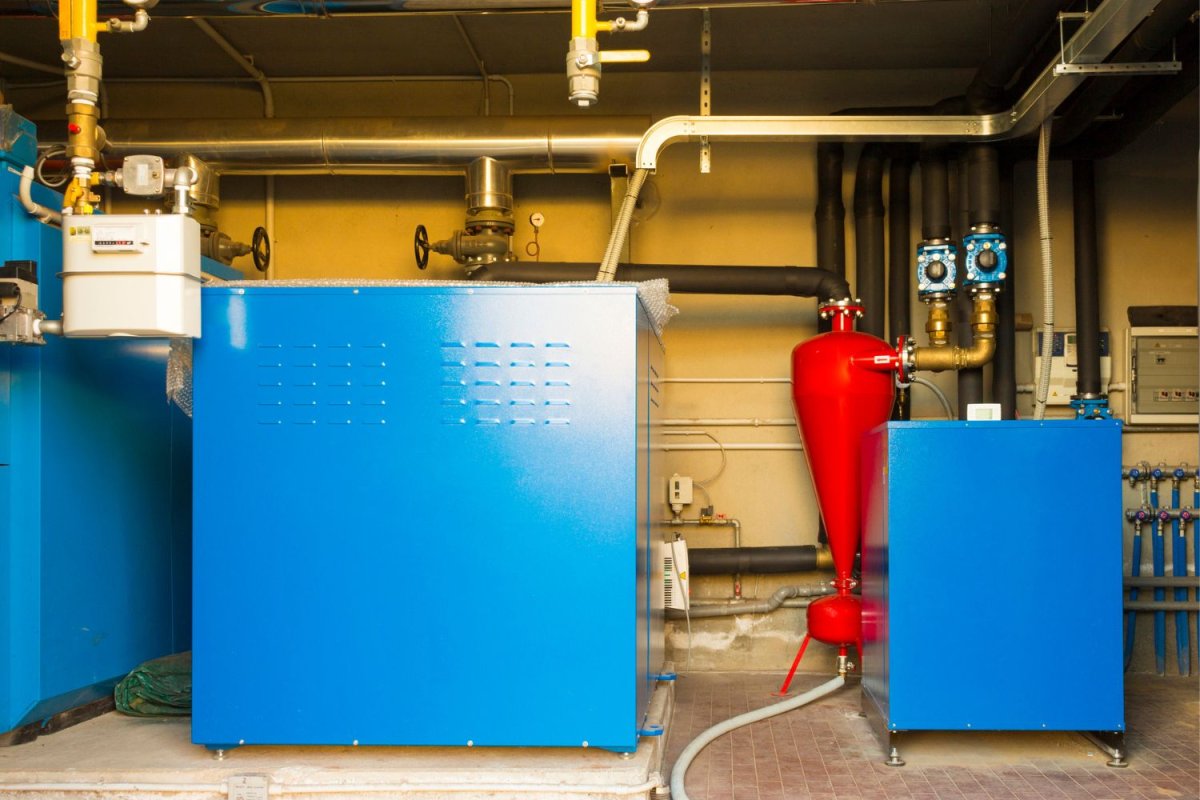

We may earn revenue from the products available on this page and participate in affiliate programs. Learn More ›
- Typical Range: $2,199 to $21,480
- National Average: $12,708
Homeowners who are considering ways to increase their home’s efficiency may be thinking about switching their home heating and cooling to a heat pump system. But what is a heat pump, and how does it work? There are two types of heat pumps: air-source and ground-source. Of the two, ground-source heat pumps, also known as geothermal heat pumps, are the more efficient. Geothermal heat pumps transfer heat to or from the ground to heat or cool a home. No matter the forecast, a geothermal heat pump can deliver energy-efficient heating or cooling, keeping a home comfortable without the inconvenience of skyrocketing energy bills.
But just how much does geothermal energy for homes cost? According to Angi and HomeAdvisor, the national average cost to install a geothermal heat pump is $12,708, falling within a typical range of $2,199 and $21,480. This guide will help homeowners understand the different types of geothermal heat pumps, the benefits of this type of system, and the ways homeowners can save money on installation and operational costs.
Factors in Calculating Geothermal Heat Pump Cost
Geothermal installation cost depends on a variety of factors, including system type, home size, installation location, and site conditions. Even geographic location plays a role in geothermal heat pump cost, while factors like tax rebates can offset some of the total price. Installation costs tend to be much higher than for other heating and cooling systems, so having a good understanding of the estimation process can help homeowners stick to their budget. When estimating a geothermal heat exchanger installation, homeowners will want to take the following factors into account.
System Type
There are four different types of geothermal heat pumps: horizontal, vertical, pond, and open-loop. The first three are considered closed-loop systems. Not all system varieties are available to every homeowner, as lot size and environmental features determine which can and can’t be installed. In general, installation costs range from $2,500 to $5,000 per ton of materials. This means a 5-ton geothermal heat pump cost could be as much as $25,000.
Horizontal loop systems are the least expensive with a price range between $15,000 and $34,000. Vertical loops cost between $20,000 and $38,000, making them the most expensive. The cost of a pond loop system varies depending on the location of the water source, while open-loop systems have a typical price range of $10,000 to $28,000. These system types are discussed in more detail below.
Home and System Size
Generally speaking, a larger home will require a larger geothermal system to meet its heating and cooling needs. This means more materials and additional labor to get the job done. Whenever more materials or labor hours are added to a job, homeowners can expect the price to increase accordingly.
When it comes to a home’s size, it’s not the number of stories or bedrooms that counts—it’s a home’s square footage. For example, a 2,400-square-foot home needs a 4-ton system (heat pump capacity is measured in tons of refrigeration, with 1 ton being equivalent to 12,000 BTUs).
Geothermal heating costs $4,000 to $8,000 per ton. A 4-ton system can cost as much as $32,000 for a moderate-sized home. Smaller homes will likely have a lower installation cost ranging between $12,000 and $24,000,, while larger homes will need a bigger budget to get the installation done—possibly as much as $48,000.
Energy Efficiency Ratio
Geothermal heat pumps have ratings that are directly related to the product quality, including Energy Efficiency Ratio, or EER. This metric rates a system’s ability to cool an area efficiently. The number is a ratio that puts the heat removed from a home over the total amount of electricity it requires to do so. This means that a higher EER rating is a more efficient system.
Some of the best geothermal heat pumps have an EER rating between 13 and 18. While every brand and model is a bit different, a homeowner can expect to pay more for a pump with a higher EER compared to one with a lower ratio.
Installation Location and Complexity
The cost to install a geothermal system in an open field with minimal obstacles is likely to be less than the cost to install one beneath a driveway. Similarly, a pond system that stretches across a lot is likely to be more expensive than one installed directly next to a residential home.
Every geothermal system installation is unique, and every contractor’s experience is unique as well. Since geothermal heating and cooling are relatively new compared to other options, there can be exceptionally high demand for experienced contractors. This means that any type of obstacle involved with an installation can instantly translate to higher costs.
Geographic Location
Installation costs for geothermal systems can also depend on a property’s geographic location. The following are some examples of installation cost for a geothermal heat pump in various cities:
- Dallas: $4,900 to $10,000
- Minneapolis: $2,700 to $11,000
- Chicago: $2,100 to $25,0000
- San Antonio: $14,300 to $18,100
- Atlanta: $5,100 to $27,700
- Pittsburgh: $55,600 to $61,000
Site Conditions
The geology and accessibility of a property play a large role in the final cost of a geothermal system installation. Contractors need to use heavy equipment to dig the appropriate horizontal or vertical trenches for a system’s loops. This means it’s important for a property to offer easy access to large machinery. If it’s difficult for a contractor to get the required equipment on site, the installation will likely increase.
In addition to a property’s layout, geological conditions must also be considered. Different materials are used for ground loops depending on the condition of the soil. If a property’s soil requires a more expensive material to ensure the system isn’t at risk for premature damage, the total installation cost is apt to rise.
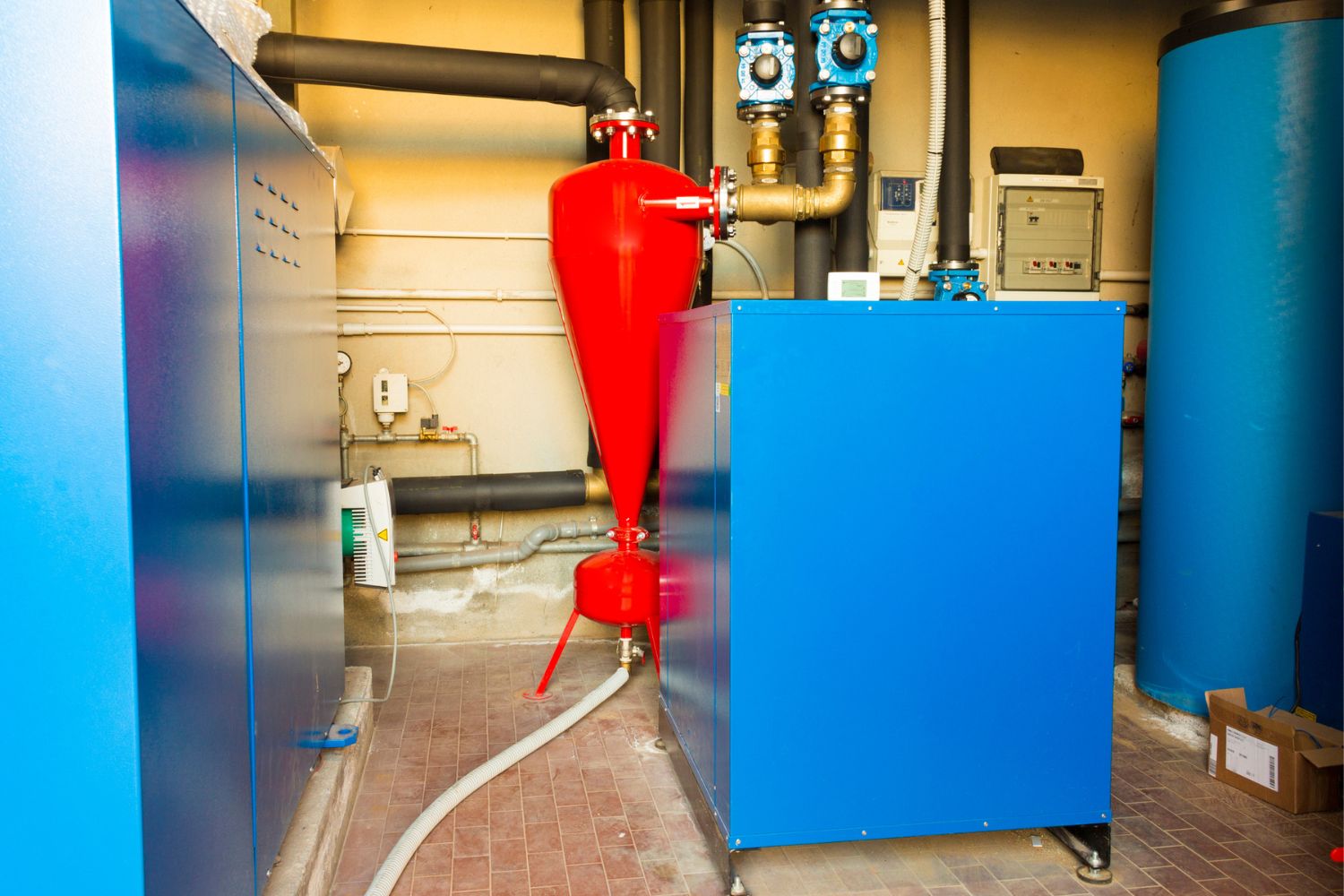
Additional Costs and Considerations
Not all geothermal heat pump installations will include the following costs, but to avoid costly surprises, homeowners will still want to keep them in mind when coming up with a budget.
New Construction vs. Retrofit
If the geothermal system is being installed in a newly constructed home that doesn’t have existing ductwork, or if the existing heating system is ductless, the cost to install the new system typically falls between $450 and $2,000. Retrofitting an existing HVAC system in a home with a geothermal heat pump system can cost homeowners between $10 and $20 per linear foot.
If it takes more than a few minor alterations to convert a system to geothermal, the cost is likely to creep up. It can sometimes cost more to retrofit a system rather than install one from scratch. In fact, installation costs can be up to 40 percent lower for new construction compared to costs for a retrofit.
Well Drilling
Well drilling involves boring a hole into the ground with the hopes of extracting a natural resource. This process may be done to access natural gas or brine. With vertical geothermal furnace systems, well drilling is done to extract groundwater. In this type of install, well drilling costs between $5 and $40 per foot. But how many feet are required for an entire system? Most boreholes are 4 to 8 inches wide. They’re spaced 10 to 20 feet apart and are dug down between 100 and 500 feet. Most installations need 3 to 5 boreholes and 300 to 500 feet of piping per ton of system-heating capacity.
In other words, the cost of well drilling can add up very quickly. Working with a contractor experienced in geothermal designs can help homeowners reduce unnecessary drilling costs.
Ductwork Modifications
Upgrading ductwork can be a major budget buster when homeowners are installing a geothermal system. If there is any concern that existing ductwork may need to be modified for a new system, a homeowner can expect to pay an additional $5,000 to $20,000. Older or damaged ductwork may also need to be modified or replaced. Replacing ductwork costs between $1,400 and $5,600.
The good news is that not all system installations require ductwork modifications; in fact, for more straightforward installations with quality ductwork already in place, this potential cost can typically be avoided.
Electrical Upgrades
When a geothermal system is being installed, electrical upgrades are sometimes required to achieve safe geothermal power for home use. This is especially true in older homes. Sometimes the upgrade can be quick and painless, while other times it can be as serious as rewiring an entire home to make sure it passes inspection after an installation.
It’s difficult to anticipate the cost of an electrical upgrade, since there are so many factors to consider. But on average, a homeowner can expect to pay between $50 and $100 per hour for an electrician, keeping in mind that this does not include parts or potential callout fees.
Efficiency Improvements
One main benefit of any type of heat pump is their energy-saving potential. So it only makes sense that a homeowner may want to investigate additional ways to improve the efficiency of their home before, during, or after a geothermal system installation.
For example, installing energy-efficient windows can help stabilize a home’s temperature and reduce residential geothermal energy use. Replacement windows cost $400 to $800 each. Upgrading insulation is another common home energy efficiency improvement; it costs between $900 and $3,000 on average.
Homeowners who aren’t sure where to start with efficiency improvements can have a home energy audit completed; this costs between $200 and $500 and can help pinpoint where a home is leaking or losing energy. And for the homeowner who wants to save energy while enjoying the benefits of a more traditional heating system, a hybrid heat pump system is always an option.
Desuperheater Tank System Installation
Geothermal systems aren’t just for heating and cooling a home’s air temperature. With the addition of a desuperheater tank system (a pump and heat exchanger that directs heat to the home’s water system), geothermal heat pumps can also help heat a home’s water supply.
Once installed, a desuperheater takes advantage of any excess geothermal heat. This system even helps in the winter. The heat may not be free, but it is produced at a much lower cost compared to that of a standard electric water heater.
Just like a geothermal system installation, a desuperheater tank has a high upfront cost between $1,400 and $3,000 or more. However, the energy savings it offers often mean the system pays for itself over time.
Landscape Repairs
Geothermal installation is highly disruptive to a home’s landscape. In fact, installation may not even be possible on some lots if an oversized patio, deck, or concrete slab is blocking the ideal drilling or digging location.
But on lots where installations do move forward, heavy equipment can definitely trample flower beds and bushes. This is simply due to logistics and not poor operations. So when determining a geothermal installation budget, homeowners will want to consider the price of landscape repairs; sod prices can range between $450 and $4,520.
If a homeowner wants to prevent as much landscape damage as possible, they may consider a vertical geothermal system. While this type costs more to install, it can be done under a driveway or prized rosebush garden with minimal disturbance to the landscape.
Permits and Regulations
Installing a geothermal system is a huge undertaking that typically requires permits and inspections to make sure local regulations are being followed. In many scenarios, the head contractor of a geothermal project will pull the permit and build it into the total project cost. But for transparency, homeowners can expect $100 to $650 of their total installation cost to be related to permits.
Homeowners considering an open-loop system will benefit from keeping in mind that regulations can come into play and that discharging groundwater can result in discharge permit fees. The amount depends on the system size, but fees for pumping water into ponds run between $2,500 and $10,000 annually.
Rebates and Tax Credits
Most additional costs and considerations can put a homeowner over budget on their geothermal system installation, but there is one that can actually add cash right back into a homeowner’s bank account.
Through 2022, geothermal heat pumps qualify for a 26 percent tax credit. The credit will reduce to 22 percent in 2023 and is set to cease at the end of that year. This credit applies to new and existing homes as well as second homes. In some scenarios, the credit could make the cost of a geothermal installation nearly the same as for a traditional HVAC system.
But even once tax credits expire, there’s still the chance for local rebates that can help absorb some of the initial costs of a geothermal system installation.
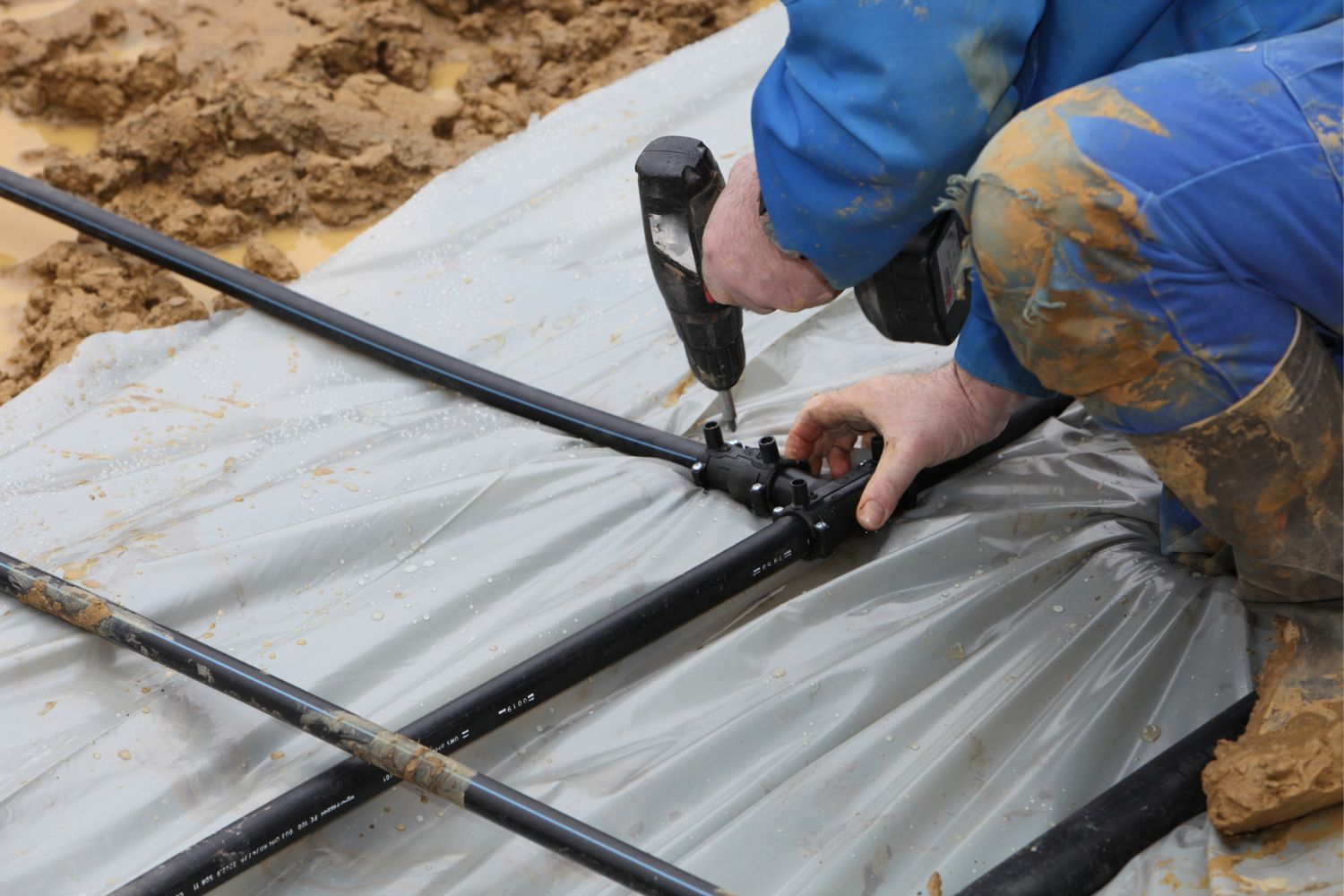
Types of Geothermal Heat Pumps
There are four main types of geothermal heat pump systems: three closed-loop systems (horizontal, vertical, and pond) and an open-loop option. The best HVAC companies or geothermal contractors are likely to recommend one type over the others based on factors such as climate, soil conditions, and local installation costs. The following breakdown of each type can help homeowners understand the best geothermal heat pump option for their home.
Horizontal
A horizontal geothermal heat pump system is often the most cost-effective for residential installations. It’s a closed-loop option, meaning that the tubing is buried in the ground. The system transfers heat between the antifreeze solution circulating through the closed-loop portion of the system and the refrigerant in the heat pump.
Horizontal systems are great for new construction as long as enough land is available. Trenches must be dug at latest four feet deep. Most layouts use two pipes with either one dug a couple of feet below the other or placed side by side. Most designs focus on looping the pipe to allow for more length in a shorter trench. This can cut down on installation costs and allow homeowners with less square footage to still install a horizontal geothermal system.
Horizontal loop systems cost between $15,000 and $34,000, depending on whether the pipes can be looped and overlapped or whether they need to be laid straight (highly dependent on soil type).
Vertical
Vertical geothermal systems are drilled deep into the ground. They’re typically used for large commercial buildings or schools where the land area doesn’t allow for horizontal loops. They may also be used in residential installations if the soil is too shallow for trenching.
Unfortunately, vertical loops are the most expensive type of geothermal system to install, since installation involves deep and wide boring. A vertical loop installation costs between $20,000 and $38,000.
Pond
While both horizontal and vertical closed-loop geothermal systems are buried in the ground, there is another option for homeowners with a body of water on their property. A pond closed-loop system involves placing the system’s pipes in an existing water source and transferring the water’s natural heat to the home. Since there is less digging, this is often the most affordable option. Closed-loop pond systems use a mixture of water and antifreeze solution and continue circulating the same water (hence the term “closed loop”).
There are minimum volume, depth, and quality requirements for a body of water being considered for a pond closed-loop system. Supply lines are run underground from the home directly into the water. They are then coiled into circles and must be placed at least 8 feet beneath the water’s surface to prevent freezing.
It’s difficult to predict the cost of a pond system, since it varies greatly based on the location of the water source. Generally speaking, the closer the water source is to the home, the lower the installation costs will be.
Open-Loop
While most geothermal systems are closed-loop, there is an open-loop option for locations with clean groundwater access. Rather than using an antifreeze solution inside the system’s piping, an open-loop system relies on surface or underground water from a nearby pond, lake, or well.
Water circulates through the heat pump unit where the heat is extracted. It is then discharged to either the original water source or a different one. For example, water may be pulled from a well and discharged into a pond.
This type of system is only practical when there is an adequate supply of clean water. Homeowners considering this system will want to keep in mind that all local codes and regulations about groundwater discharge must be met.
Every open-loop system is different, and various factors affect the cost, but most open-loop systems fall within a typical range of $10,000 to $28,000.
Benefits of Choosing a Geothermal Heat Pump
There are several proven benefits of geothermal heat pump systems that can take the sting out of their high upfront costs. For homeowners still on the fence about a geothermal system, the following advantages may offer clarification and encouragement.
Reduced Energy Consumption
Energy production and consumption directly affect the earth. Air pollution, water pollution, thermal pollution, climate change, and solid waste disposal are all side effects of using energy at high levels. Geothermal heat pumps can help homes reduce energy consumption, making a positive impact on the planet.
The cost of fossil fuels can also be regulated; geothermal heat pumps conserve what are already limited natural resources, and because they use less energy, more ecosystems (and the animals that live in them) are preserved.
Compared to other types of heating systems, geothermal heat pumps offer impressive energy savings that offer more than just financial benefits. By reducing energy usage, geothermal heat pumps can positively impact natural resources, ecosystems, and economics.
Reduced Utility Bills
Geothermal heat pumps use up to 50 percent less electricity than conventional heating or cooling systems. This can help a homeowner save up to 70 percent on their heating and cooling costs.
Simply put, geothermal heating and cooling systems offer homeowners the lowest ownership and operation costs over their lifetime when matched against any other heating and cooling system.
It’s no secret that geothermal heat pumps come with high installation costs, but when properly sized to a home without serious insulation issues, a geothermal heating system can eventually pay for itself through reduced energy consumption.
Low Emissions
There are many benefits to lowered energy consumption, but one of the most important is lowered emissions. Geothermal heat pumps use less electricity, which means fewer fossil fuels are burned to generate the power needed to heat a home. As a result, less carbon dioxide and sulfur dioxide as well as fewer nitrogen oxides are released into the atmosphere.
Low Maintenance
Compared to other heating and cooling systems, geothermal heat pumps are relatively low maintenance. However, this shouldn’t be confused with maintenance-free, as they do need to be inspected annually. Fall is an ideal time to schedule an inspection with an experienced geothermal contractor. The indoor components, including the blower fan and motors, can be inspected after the unit has worked throughout the summer to keep a home cool.
The outdoor components also need to be inspected, including checking the ground loops for leaks. Regular maintenance is the best way for a homeowner to protect their investment and make sure the expected lifespan of their geothermal system isn’t cut short.
While the maintenance may be different than for a traditional heating system, it’s just as necessary. The good news is that geothermal heat pump maintenance is easily accomplished with an annual inspection by a trained technician.
Return on Investment
Not only do geothermal systems end up paying for themselves within just a few years after installation, but they can go even further and actually provide a return on investment.
In fact, geothermal systems typically end up paying for themselves in energy savings. Government tax credits also help offset the initial costs of installation. As the savings continue to add up, they can eventually exceed the cost of the system installation and start to offer positive cash flow.
While a geothermal system won’t put cash back into a bank account, it can help homeowners avoid overpaying for energy without compromising the comfort of their homes.
Long Lifespan
No heating system can last forever, but a geothermal system can outlast conventional heating and cooling systems with ease (and regular maintenance, of course).
The expected lifespan of a geothermal system depends on the part of the system in question. For example, the underground pipe loop portion of the system can last up to 50 years. The geothermal unit itself has a slightly shorter lifespan, averaging 15 to 20 years before needing to be replaced.
However, a system that receives minimal to no maintenance or wasn’t properly installed to begin with may not have as many good years as a homeowner might hope. An inspection from a trained geothermal contractor can provide some insight into how much longer an existing geothermal system will last before repair or replacement becomes more likely.
When it comes to a new geothermal system, working with an experienced and certified geothermal contractor can ensure the system will last as long as possible. For a homeowner looking for a heating and cooling system that won’t call it quits too soon, a geothermal system offers an impressively long lifespan.
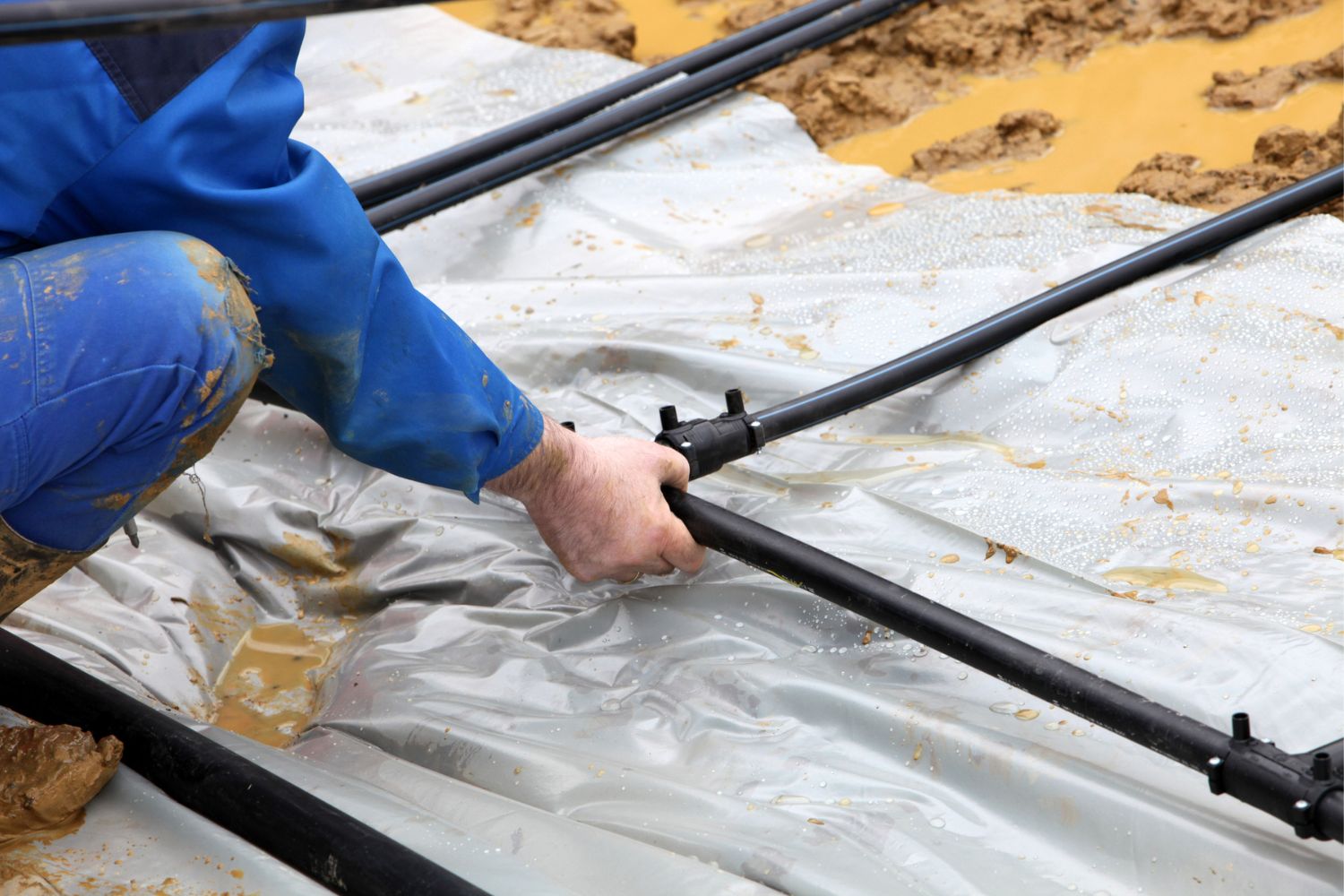
Geothermal Heat Pump Installation: DIY vs. Hiring a Professional
There are a few different types of heat pumps, all with similar functions, but some are easier to DIY than others. Installing a geothermal heat pump is not typically a task that can be carried out by a homeowner. If the installation isn’t nearly flawless, the pump will not function successfully. This is why most homeowners turn to a professional when having a geothermal heat pump installed on their property.
One of the main benefits of bringing in a geothermal contractor is that they can ensure the design of the system is appropriate for the size of the home. In order for a geothermal system to work properly, the heat pump, ground collector, and radiator or underfloor heating systems must all be correctly sized. In a DIY installation, undersizing and oversizing are both possibilities that can lead to high running costs and poor performance of the pump.
Safety is another issue in DIY geothermal heat pump installations. A pump installation can be challenging and often requires heavy appliances or special equipment. Special skills like welding are often part of the process as well; it’s unlikely that a homeowner has any experience with such a project. This can leave too much room for error and injury.
But for the homeowner who wants to tackle a DIY geothermal heat pump installation, there is some good news, as there are some steps of the installation process that a homeowner may be able to handle on their own.
- If a horizontal ground source heat pump is being installed, a homeowner can dig the trenches.
- A homeowner can prepare both the indoor and outdoor sites so that contractors and equipment can access them quickly and easily.
- Research is another DIY task a homeowner can take on, ensuring they’re working with the best geothermal contractor who is capable of a near-perfect installation.
Installing any sort of heating system is best left to a professional. However, installing a geothermal heat pump leaves some room for DIY projects without sacrificing the safety and efficiency of the system.
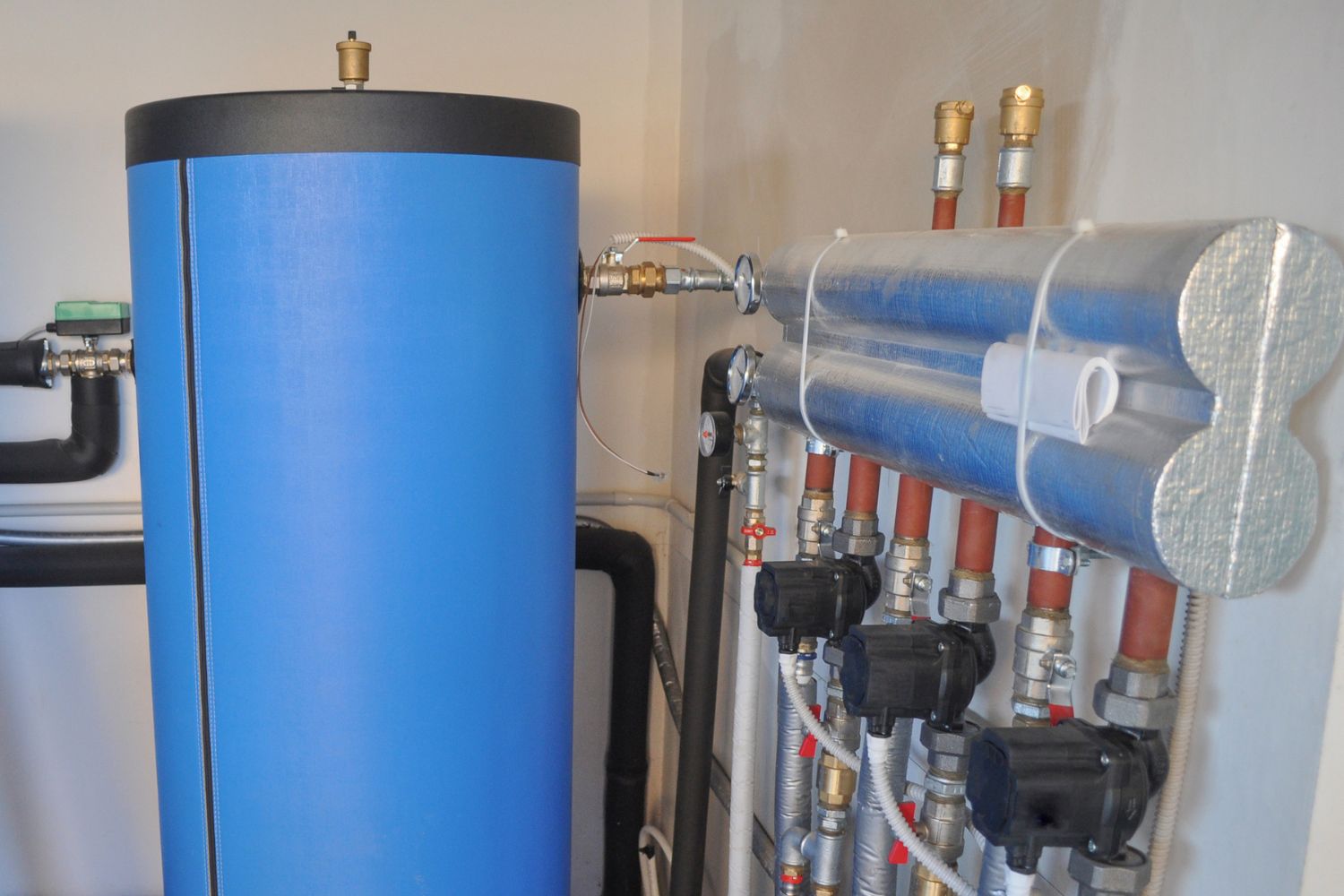
How to Save Money on Geothermal Heat Pump Cost
Geothermal heat pumps have a high installation cost. Luckily, there are several ways a homeowner can save on the cost.
- Invest in insulation first. Larger homes require larger geothermal systems to keep up with heating demands. A home that is better insulated may be able to get away with a smaller pump, resulting in a smaller installation cost.
- Get multiple geothermal heat cost estimates. Installing a geothermal heating system isn’t the most common contractor job, so there can be a wide range of prices. Obtaining multiple quotes (at least three is recommended) can help you ensure the final price is not just the least expensive but also the fairest for the job.
- Ask about rebates. You may be able to receive a rebate on your heat pump purchase and installation. This can be in the form of a cash rebate from a manufacturer or a tax rebate when filing state or federal taxes. And in some areas, programs or grants can help absorb the costs of geothermal pump installation.
- Make maintenance a priority. While performing routine maintenance may not help reduce an initial geothermal heat pump cost, it can prevent costly repairs and extend the expected lifespan of a geothermal system, and thereby prevent a premature geothermal heat pump replacement cost.
- Consider the necessity of features. While all available features of a geothermal system can add to comfort (like multiple zones for better temperature control), they also add to the cost. Discuss the pros and cons of each option with your contractor to decide which ones are worth the investment and which ones raise installation costs without much benefit.
Questions to Ask About Geothermal Heat Pump Installation
Low-quality geothermal installations can cause insufficient heating, higher-than-expected energy costs, and even system failure. That’s why it’s so important for homeowners to find a geothermal contractor who has experience in the field by asking the following questions.
- How long have you been in business, or how many years of experience do you have?
- Are you certified to install geothermal systems?
- How many geothermal heat pumps have you installed?
- What is a geothermal heat pump, and how does it differ from a traditional heating and cooling system?
- Is geothermal energy expensive?
- Do you have any references I can contact?
- Do you carry property damage and public liability insurance?
- Is heat currently being lost in my home?
- How do you measure a home for a geothermal system?
- When can the project start?
- How long will the project take?
- How early in the morning does your team start, and how late into the day do they work?
- Will you or someone else complete the installation?
- Will you be installing the outside ground loop, or do you use subcontractors?
- What benefits can I expect from a geothermal heat pump?
- Is there a warranty on the pump, on any of its components, or on the installation?
- Do you require a down payment?
- How does your payment system work?
- Will you handle any necessary permit applications or inspections?
- How do you address disputes, should there be an issue after installation?
FAQs
Geothermal heat pumps offer homeowners a clean and efficient heating and cooling option. While the initial costs are higher than those for traditional HVAC systems, energy savings can eventually offset the installation price. Deciding to heat their home with a geothermal pump can be a difficult step for homeowners to take, given the average installation cost of $12,708,. The following FAQs may help a homeowner decide if a geothermal heat pump is the right type of heating and cooling system for their home.
Q. What is the lifespan of a geothermal heat pump?
Thanks to their long lifespans, geothermal heat pumps are great investments. The outdoor components, including outdoor pipes, can last up to 50 years; the indoor parts have an average lifespan of 25 years. While geothermal heat pumps can be more expensive up front than other systems, they can prove to be the most affordable option for homeowners planning to stay put in their home for years to come.
Q. What are the disadvantages of geothermal energy?
Geothermal energy offers plenty of benefits, but there are some disadvantages. First, geothermal energy allows greenhouse gases to enter the atmosphere. However, this pollution is very low and typically an issue only for geothermal power plants. Additionally, there are sustainability issues with geothermal power, as reservoirs can be depleted over time. This isn’t an issue for residential geothermal heating and cooling, though.
Q. Is geothermal more efficient than an air-source heat pump?
In short, yes. Geothermal heat pumps are more efficient than the best heat pumps that use air as a source. Air-source heat pumps collect and transfer heat from the air. However, air temperature is unstable compared to the temperature belowground, from which geothermal heat pumps collect and transfer heat. When it comes to cooling, both pumps can transfer heat from indoors to outside. Although air-source heat pumps cost much less, in general geothermal heat pumps are far more efficient.
Q. Are geothermal heat pumps worth the money?
Geothermal HVAC cost is relatively high, but some systems can be up to 600 percent more efficient than traditional heating options. Installing a geothermal pump can also result in a federal tax credit, which can make up for some of the higher installation cost. Homeowners can also enjoy more affordable utility bills, which can add up to long-term payback for their investment.
Sources: Angi (1 and 2), HomeAdvisor, HomeGuide, EnergySage, CaliforniaGeo, Pyramid Heating
